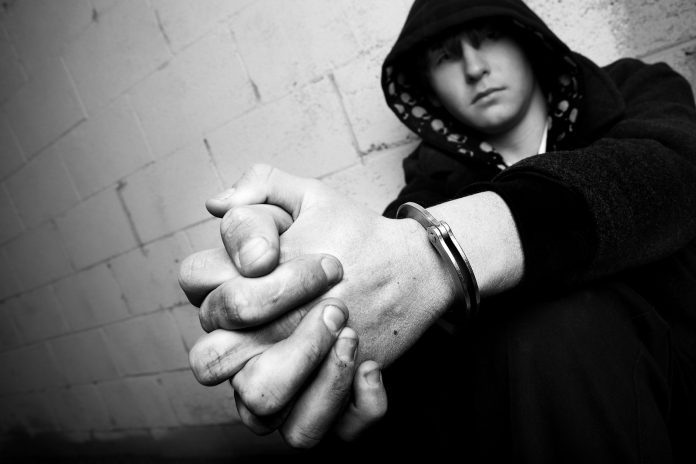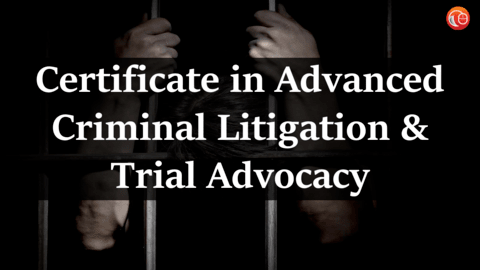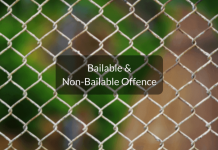This article is written by Ms. Kishita Gupta from Unitedworld School of Law, Karnavati University, Gandhinagar. This article deals with the concepts and the aspects relating to victim assistance in India.
Table of Contents
Introduction
Victims of crime receive no assistance from the justice system. The concept of a fair trial and justice was noted in the case of Mohd. Hussain @ Julfikar Ali vs The State (Govt. Of NCT) Delhi (2012) as entailing a triangulation of the accused’s, victim’s, and society’s rights and interests. The rights of the community and the accused are meticulously delineated under an adversarial system, and they frequently supersede those of the victim, whose rights are procedurally non-existent. Rather than an individual who has been damaged, the victim is seen in connection to society and the offender.
It has been claimed that regulations and processes have been put in place in various countries to provide for more humane treatment of victims. Greater acknowledgement of victims’ rights, the importance of their role in the process, and their vested interest in the case and its conclusion are examples of such policies and procedures. In many nations, Court-related support to victims, particularly in criminal procedures, is still quite rare.
Meaning of the term ‘victim’
The word “victim” comes from the early religious concepts of pain, sacrifice, and death. The term victim was a well-known notion in ancient civilizations, particularly in Babylonia, Palestine, Greece, and Rome. The law in each of these civilizations required that the victim be regarded as a human being who deserved to be made whole by the criminal.
The term victim is defined by the United Nations Declaration of Basic Principles of Justice for Victims of Crime and Abuse of Power which is the Magna Carta on Victims’ Rights:
“Any person who has suffered any mental, physical, emotional, economic, or substantial impairment of their fundamental rights, individually or collectively, as a result of acts or omissions that are in violation of criminal laws operative within member states, including those laws prescribing criminal abuse of power.”
A “crime victim” is someone who has been physically, financially, or emotionally wounded, or whose property has been taken or damaged by someone who has committed a crime. A “general victim” is someone who has been physically, financially, or emotionally wounded, or whose property has been taken or damaged by someone, an event, an organization, or a natural phenomenon.
Another crucial aspect is the acknowledgement of victims of power abuse. If a person is harmed as a result of a government act, he is a victim of an abuse of power. In the case of Rudul Shah vs. State of Bihar (1983), the Supreme Court, in dealing with the suffering of under-trial inmates and those in correctional institutions, referred to them as victims of abuse of power, allowing them and their rights to be protected to a large extent. Furthermore, in Alister Anthony Pareira vs State of Maharashtra (2012), the Court held that the legal system owes it to such victims of crime and abuse of power to safeguard them, thus expanding the state’s role in the justice system.
The concept of victim adopted under Section 2(wa) of the Criminal Procedure Code of 1973, on the other hand, is at odds with international standards. In order for a victim to be involved, the accused must be identified and charged; and despite the Supreme Court’s affirmative steps, victims of power abuse have not been recognized. The aforementioned definitional difference is the first step toward a miscarriage of justice.
Meaning of the term ‘victim assistance’
“Victim Assistance, Support, or Services” refers to the activities carried out in reaction to victimization with the goal of alleviating suffering and easing recovery. Information, assessments, individual interventions, case advocacy, system advocacy, public policy, and program creation are all examples of this.
According to the United Nations Office on Drugs and Crime (UNODC), victim assistance attempts to provide holistic help that extends beyond the criminal justice system. It’s not just about rescuing the victim. It primarily serves two purposes:
- It recovers victims’ wholeness after they have been victimized;
- It has procedures in place to lessen the danger of re-victimization.
As a result, it seeks to give victims a sense of agency and power. The goal of victim assistance is to improve the victims’ quality of life, which has been harmed by the crime. Victim support as a right begins when a crime is committed and continues until the victim’s previous position is restored. The criminal justice system is merely one aspect of the overall picture.
Compensation for victims of a crime in India
Victims of any crime or violation of human rights (regardless of legal status) have the right to be compensated for the losses incurred as a result of the crime perpetrated against them. Compensation for material (such as unpaid wages and medical expenditures) and non-material (such as pain, suffering, and trauma) damages can be sought through criminal, civil, or administrative procedures.
In India, victim assistance is frequently misunderstood to mean just compensating victims. The victim compensation scheme, which was enacted by a 2009 Amendment to the Criminal Procedure Code, requires every state government to develop a plan for compensating and rehabilitating crime victims. The National Commission for Women has recommended establishing a Criminal Injuries Compensation Board to compensate rape victims.
The above idea is based on Supreme Court of India directives granted in the case of Delhi Domestic Working Women’s Forum vs. Union of India and others (1994), which asked the National Commission for Women to develop a “system to wipe out the tears of unlucky rape victims.” The SC stated that, in light of the Directive Principles contained in Article 38(1) of the Constitution of India, it was necessary to establish a Criminal Injuries Compensation Board, as rape victims frequently suffer significant financial losses in addition to mental anguish, and in some cases are too traumatized to continue working. The Court further ordered that compensation for victims be granted by the Court if the criminal is convicted, and by the Criminal Injuries Compensation Board whether or not the offender is convicted. If a woman becomes pregnant as a result of rape, the Board must consider her pain, suffering, and shock, as well as her loss of earnings and childbirth expenditures.
“It would be appropriate if NALSA sets up a Committee of about 4 or 5 persons who can prepare Model Rules for Victim Compensation for sexual offences and acid attacks taking into account the submissions made by the learned Amicus,” the Supreme Court of India said in Nipun Saxena vs. Union of India (2018). Both the learned Amicus and the learned Solicitor General have pledged to help the Committee as needed. “The Chairperson of the National Commission for Women, or a nominee for the Chairperson, should be a member of the Committee.”
The fact that states have sole authority over compensation systems creates challenges not only in terms of implementation but also in terms of victim discrimination. Regardless of the matter at hand, where they seek justice, victims have the right to be treated equally. Furthermore, compensation is not available to victims until the appeal’s limitation period expires or the appeal is underway in Court. In an already overburdened legal system, this creates a substantial hindrance to destitute victims’ ability to support themselves, negating the entire purpose of compensations. Compensations, on the other hand, are only one of the victim’s many rights. Compensation is insufficient in circumstances where the victim dies or becomes handicapped. Victim assistance is a multifaceted system aimed at easing the victim’s situation, with compensation being only one component.
In India, the actual obstruction to victim help is twofold. To begin with, there is a lack of a structural legal framework for supporting crime victims. Section 357C of the Criminal Procedure Code, 1973, inserted by the Criminal Law (Amendment) Act, 2013, and the guidelines and protocols on medico-legal care for survivors/victims of sexual violence prepared by the Ministry of Health and Family Welfare are the only two major legislative actions that refer to victim assistance and except for this, there are no other legislative frameworks that supports the crime victims.
Types of assistance
Emotional assistance
Criminal activity can have a negative impact on the victim’s mental and emotional health. If a person has been impacted by a crime, one of the ways the victims may be assisted is, by providing them with the emotional assistance that they require. Counselling is a sort of treatment in which skilled specialists examine a person’s entire life and background in order to help them better understand themselves.
Financial assistance
As noted above, financial assistance is also required by the victims of crime and hence, the Government of India provides compensation to the victims of crime under Section 357C of the CrPC. It helps the victims and their families who were dependent on them for the livelihood of the household to sustain a living for them.
Stakeholders for victim assistance
Police
Because the police are the initial point of contact in the criminal justice system, they must be well-equipped to deal with victims. Section 154 of the Code of Criminal Procedure (1973) obliges a police officer to write an FIR. They must collect evidence while keeping the victim’s dignity in mind and treating them with respect regardless of the offence. The police must subsequently refer the victim to lawyers, non-governmental organizations, and other support systems that can provide the greatest possible assistance. The police shall act according to the role prescribed under the CrPC under Section 173, 301, 421, 164, 342 and 364. These are delicate matters of victim assistance and police should handle them in such a way only.
Lawyers and prosecutors
Lawyers and prosecutors play a role that is similar to that of the police. Prosecutors should be taught to strive for justice rather than conviction. Lawyers serve as a link between the police and the victim, and by collaborating with the prosecutor, they should ensure that the victim’s best interests are represented in Court. Victims of hurtful, threatening, or violent situations can seek support from the victim advocacy program. Victim Advocates are specially trained staff who offer:
- Personal assistance and an opportunity to talk about what happened.
- Information on options and resources, as well as answers to frequently asked questions.
- Assistance in deciding on a plan of action and thinking it through.
- Accompanies the victim to meetings, Court hearings, and other events, or acts as a liaison.
- Connection to resources on campus, in the community, and at the state level for counselling, advising and reporting.
- A link to the university’s offices (when appropriate, advocates can work with faculty and staff).
Judiciary
The judiciary must be a fair and unbiased body that monitors the course of a criminal case. All parties participating in criminal procedures should have their rights considered and protected by judges. Victims should be afforded crucial protection by judges. Special arrangements, such as permitting the victim to testify through closed-circuit television, can be authorized in cases involving children, if applicable and possible.
Individual rights are solely protected by the judiciary. The courts play an important role in victim protection, from accelerating trials to including victims in all phases of the proceedings. However, there have been a number of cases when the judiciary has openly overlooked the victims’ rights and interests. The judiciary has failed the victims by issuing orders such as granting bail on the condition of tying a rakhi to the rapist (which was later scrapped by the SC) or asking a rapist to marry the victim based on the accused’s assertions. Despite being the guardian of the rule of law, the judiciary has maintained a limited and discriminatory attitude towards victim relief.
But there has been a positive response also from the judiciary. The Supreme Court required the use of cameras during trials, particularly where the victim is a child or a rape victim, in Sakshi v. Union of India (2004). The Supreme Court held in Nirmal Singh Kahlon v. State of Punjab (2008) that the right to a fair investigation and trial applies to both the accused and the victim, and that this right is guaranteed under Article 21 of the Indian Constitution. As a result, a victim of a crime has the same right to a fair investigation. The Supreme Court concluded in Bodhisattwa Gautam v. Subhra Chakraborty (1995) that if a Court trying a rape case has jurisdiction to award compensation at the end of the case, the Court also has the authority to give interim compensation. After determining the accused’s prima facie guilt, the Court ordered him to pay a monthly sum of Rs. 1000 to the victim as interim compensation, as well as compensation arrears dating back to the date of the complaint. The Madras High Court, based on the report of a commissioner appointed by it to assess the losses, ordered payment of varying amounts of compensation for the loss of property of the Sikh community in Coimbatore in R. Gandhi v. Union of India (2020).
In Nilabati Behra v. State of Orissa (1961), the Supreme Court stated that the state must compensate the petitioners for the harm caused by its officers. As a result, strict liability for violations of fundamental rights is a remedy available in public law to which the principle of sovereign immunity does not apply, such as awarding compensation in a proceeding under Article 32 or Article 226.
Mediators
Mediation programs bring the perpetrator and the victim together in person to work out a restitution agreement. The goal is to improve the victim’s social condition, which has been harmed by the offender. The entire mediation method differs from regular criminal proceedings in that a mediation session can only be scheduled with both the victim and the offender’s cooperation. Participants in a reconciliation session can bring up any social conflicts that may have contributed to the delinquent behaviour. However, critics of the employment of informal procedures (such as mediation, arbitration, conciliation, and applied therapeutic techniques) have raised concerns about potential risks, such as the application of undue pressure to one or both sides.
Non – Governmental Organisations (NGO)
Victim support services must be accessible in order to help as many victims as possible. This accessibility will be expressed in a variety of ways, including availability in both urban and rural locations, offices that are relaxing and pleasant, and victims’ privacy and anonymity. Victimization is a one-of-a-kind, individualized experience in which victims’ needs change over time and are influenced by personal and environmental circumstances. The ability of organizations and institutions to respond to the unique circumstances of victims is a critical prerequisite that can aid particularly vulnerable victims in seeking and receiving assistance.
Helplines, emotional, practical, administrative, and psychological support, legal aid, and accompanying are all services that NGOs frequently give. Because of the nature of these services, their effectiveness will be determined by their accessibility and availability, as well as the capability, aptitude, and attitude of employees who interact with victims. Cost-cutting is a critical component of any business. Decisions on how and who will deliver a service are frequently influenced by the financial implications.
Conclusion
The victim support movement promotes a restorative-justice policy that tries to resolve criminal acts with comprehensive programs that address both the victim’s and offender’s needs. The author further contends that because the state is responsible for protecting its inhabitants, it is equally responsible for giving reparations to crime victims as a matter of social justice. It is found that, despite India’s significant improvements in criminal investigations and prosecution, crime victims’ sufferings have been mainly ignored. In many situations, victims’ suffering has been alleviated only via the assistance of humanitarian organizations and human rights commissions, and this is more common in cases of newsworthy crimes.
References
- https://www.msuniv.ac.in/Download/Pdf/fd7615ae586e44f
- https://criminallawstudiesnluj.wordpress.com/2021/03/06/victim-assistance-in-india-broadening-the-scope-of-victim-reparations-in-the-criminal-justice-system/
LawSikho has created a telegram group for exchanging legal knowledge, referrals, and various opportunities. You can click on this link and join:
 Serato DJ Crack 2025Serato DJ PRO Crack
Serato DJ Crack 2025Serato DJ PRO Crack











 Allow notifications
Allow notifications



